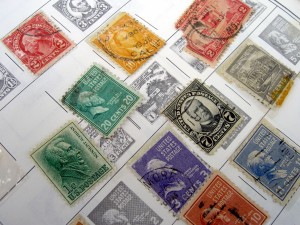The History of Collecting Through the Ages
- July 30, 2014
- •
- Posted in : Collecting, General Storage

What counts as a collection?
Stamps, comic books…or a glass cabinet filled with porcelain German Shepherds. Most of us have something approximating to a collection either on prominent display in our homes or hidden away in a cupboard of shame. Collections have existed for thousands of years though. No, we’re not talking about a lava-preserved figure at Pompeii proudly clutching a completed chariot-racing sticker album. Let us take you back to…
See our previous post where we will give you some of the World’s Weirdest Collections.
The earliest library
The earliest libraries discovered so far date back to 2600 BC and have been excavated in Sumer, an ancient civilization located in modern-day Iraq. These were really more like archives than what we’d now understand to be libraries though, housing clay tablets recording commercial transactions and inventories. The earliest private libraries that have been discovered are found in excavations of the historical town of Ugarit, an ancient port located in what is now Syria. The oldest private libraries found there date from around 1200 BC.
Libraries also became favoured spoils of war. When the Roman general Lucius Aemilius Paullus defeated King Perseus of Macedonia in 168 BC, it’s reported that the only treasure that he kept for himself was Perseus’s private library. It’s probably not a collection-building tactic that we could recommend. As much as you might envy your neighbour’s comics collection and its inclusion of The Flash vol.1 #112 (first appearance of The Elongated Man), leading an army into battle to defeat him and seize it will generally be considered something of a social faux pas. People may be nervous of mentioning it directly (commanding your own army will grant you a bit of leverage when you’re out and about) but expect some ‘tuts’ and shakes of the head when you’re buying milk in the corner shop.
The earliest museum
You can imagine the confusion of archaeologists excavating the palace of King Nabonidus, the last King of the important Sumerian city-state of Ur (found in what is now Iraq). They discovered rooms containing dozens of artefacts from different time periods, all neatly lined up, with clay cylinder drums bearing three different types of language. Eventually it dawned on them…they weren’t the first people with a keen interest in history to have set foot there. They were in the world’s earliest museum!
The daughter of Nabonidus, Princess Ennigaldi-Nanna, had created it after picking up the antique bug from her father. He’s generally believed to have been the world’s first archaeologist and passed on a love of antiques and antique restoration to his daughter. Not that collecting antiques could have been too difficult in those days. That cup you just drank out of in the morning? That’s an antique. That pillow you rested your head on? An antique. That cat ornament on your mantlepiece? Another antique (Yes, we do know that’s not how it actually works…).
In fact, putting aside our facetiousness, the items on display were already several centuries old when they were added to the museum by Ennigaldi-Nanna. It’s believed that some were excavated by her father and some were excavated by her personally. Kudos to her for the tri-lingual labelling too – an early eye on the tourist market!
The earliest zoo
If the archaeologists working on Nabonidus’s palace risked being bamboozled then spare a thought for those excavating the ancient Egyptian capital of Hierakonopolis. They must have been on the verge of contacting natural historian colleagues to announce a major rethink in the living habits of animals. Dating from around 3500 BC, they found the remains of 2 elephants, 3 hippos, 11 baboons, 6 wildcats, 10 dogs and more animals – all in fairly close proximity. Further examination showed bone fractures to a hippo, a baboon, and a wildcat that could only have healed in a protected environment and not when exposed to the wild. This was the world’s earliest zoo.
It may have been a slightly grim zoo though…there is the suggestion that some animals would have been sacrificed on the death of a ruler. Ancient Egypt, for when funerals aren’t depressing enough.
These are all fairly grand examples but what you probably want to know is…
When did collecting as we know it begin?
The author (and collector) Hunter Davies has researched the history of collecting and believes that the type of collecting that we now indulge in today probably dates from around Victorian times. It was in the 1860s that stamp albums and catalogues of collectible stamps began to be produced – something he knows because he has them in his own collection! Examples of collecting included those of an engineering nature seeking out older pieces of machinery from the industrial revolution or those with an interest in natural history sourcing and storing items like shells, fossils, and dried flowers.
Then again, those 19th Century collectors may have been inspired by 18th century collection-heroes like Sir Hans Sloane. When he died in 1753, the UK parliament agreed to buy his vast collection of around 80,000 items – spanning books, herbs, and animal & mineral samples. In 1759, the British Natural History Museum opened, using his collection as its basis.
Think Flexistore if you want to store your collection in a secure place
Collecting has a long and proud history…which is something that you can tell your partner when they ask why you no longer seem to have a spare room! If you can’t bear to part with your own collection but feel like it may be beginning to outgrow your current abode, why not let Flexistore help? We’re used to storing all manner of things, including prized collections.
For more information about our mobile self storage service and a free quote, please contact us on 0845 430 9333.